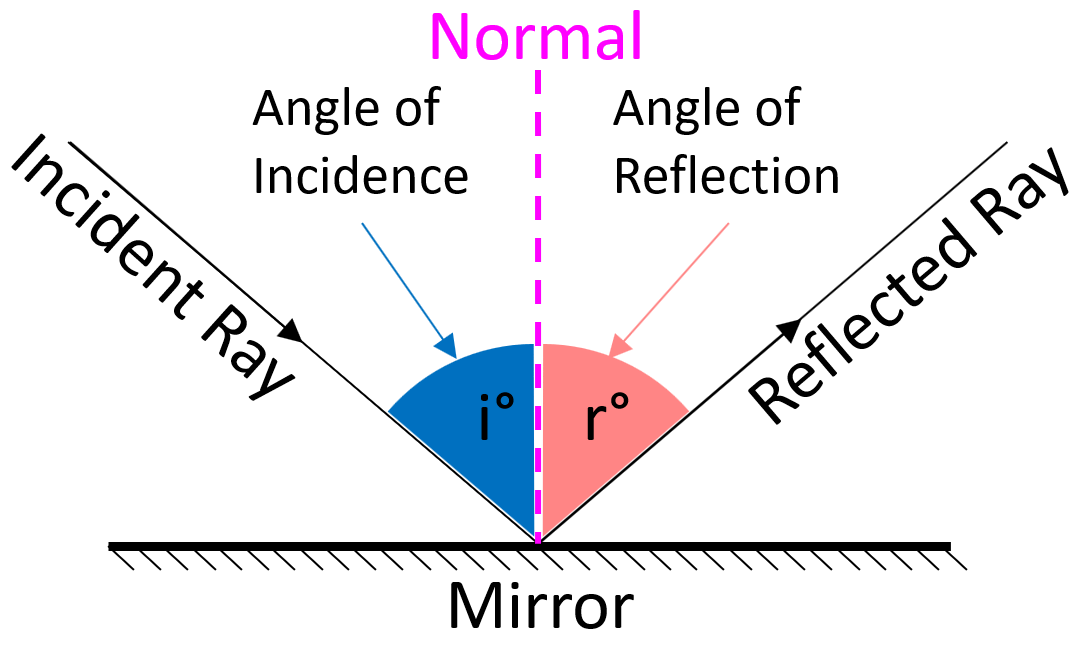
Likewise, it cannot be captured on a photographic film or sensor. A virtual image is erect but cannot be projected on a screen. It can be captured on a light-sensitive film or sensor.

In reflection of light, what is the difference between real and virtual images?Īns: A real image is inverted and can be projected on a screen. What type of reflection makes it possible for us to see our surroundings?Īns: Our eyes receive light from all directions due to diffused reflection from objects when light falls on them, and it gets scattered. Where do we experience the reflection of sound?Īns: We experience the reflection of sound near hills, large buildings, inside large halls. Since they are curved, the outer surface behaves like a convex mirror. Why do we see diminished or distorted images on the outer surface of steel vessels?Īns: Steel vessels are smooth.

It can be light, sound, water waves, radio waves, seismic waves. We see three images when we place two mirrors perpendicular to each other.Īns: Reflection means the bouncing of a wave when it hits the surface of an object. Since \(n\) is an even number, the number of images seen is \(n – 1 = 3\) In simple words, if the angle of incidence is \( = 4\) The angle of incidence is equal to the angle of reflection. In that case, it will also contain the normal to the surface at the point of incidence. Suppose we imagine a plane passing through the incident ray and the reflected ray. The incident ray, the reflected ray, and the normal to the surface at the point of incidence all lie in the same plane. Point of incidence: It is the point where the incident ray touches the surface. Normal: It is the line that is perpendicular to a surface. Reflected ray: It is the ray that bounces back from the surface. Incident ray: The ray of light that hits the reflecting surface is the incident ray. We can see that the image distance from the mirror is equal to the distance of the object from the mirror. For the image formed by a plane mirror, the image distance from the mirror will be equal to the object distance from the mirror.

Light rays falling on it get bounced back by the smooth surface, and we can see the reflection of the object in the mirror. Plane mirrors we use at home form our virtual image. Depending on the mirror (reflecting surface) and object position we get two types of images called real and virtual images. When light from any object reflects from polished surfaces, reflection is called regular reflection. These rules are called laws of reflection. Repeat the experiment by varying the angle of incidence and recording the corresponding angle of reflection.Light reflects from any surface according to two rules. Measure the angle of incidence and the angle of reflection.ħ. Remove the mirror and the ray box from the paper and join the crosses to track the incident ray and the reflected ray.Ħ. Mark the reflected ray with a cross on the paper using a pencil.ĥ. The light ray falls on the mirror and gets reflected. Using a pencil mark the path of the incident ray with a cross on the paper.Ĥ.

Draw a line perpendicular to the reflecting surface of the mirror and mark it as the normal.Ģ. Place the light source (light ray box) away from the plane mirror, facing its reflecting surface as shown in the image.ģ. Shine the ray of light at the point where the normal meets the plane of the mirror. The experimental set up requires a light source (light ray box), a reflecting surface (plane mirror), a ruler, a protractor (to measure angles), an A4 size paper and marking pencils.ġ. Place the A4 paper on a leveled surface, draw a line along the long edge and fix a plane mirror upright on it. The angle of reflection can be experimentally measured.


 0 kommentar(er)
0 kommentar(er)
